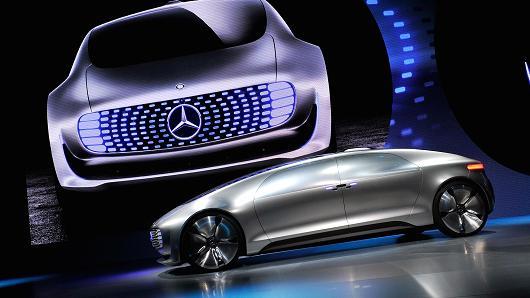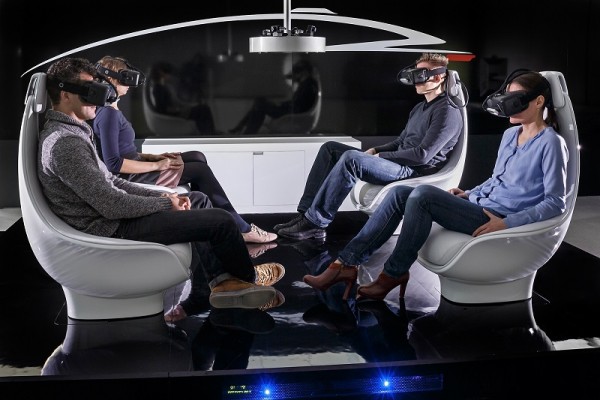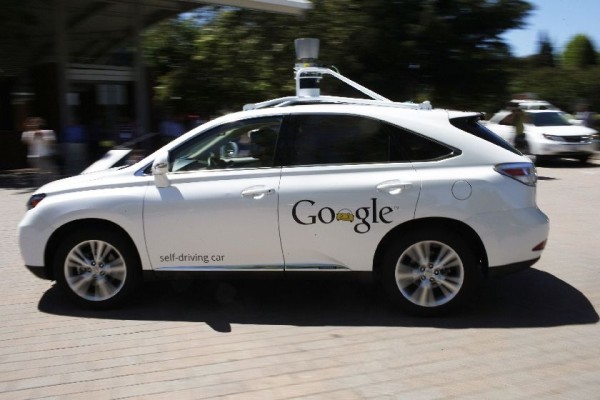
Car companies like Mercedes and BMW, as well as companies like Google and Apple have thrown around the idea of building a self driving car. The CES 2015, held in Las Vegas, made it known to the world that as early as 2017 but by 2020 at the latest, self -driving cars will be on the streets. Audi has already built and tested a car that drove itself between Silicon Valley, California and Las Vegas. The journalist behind the wheel simply sat back and watched the car drive itself.
The unveiling of a Mercedes-Benz at this year’s CES showed the world that it will be feasible to have a self -driving car in which the “driver’s” seat can be swiveled around so the person sitting in it can see their backseat passengers face to face. As if that isn’t impressive enough, the convention also featured a BMW that not only parks itself but will find its own space in any parking garage. The CEO of Ford also announced plans to release a self-driving car that the average American is more likely able to afford as compared to a Mercedes-Benz or BMW.
Car companies have been testing this technology since 2004. At that time a self-driving car could not travel more than seven miles before stopping. This was a huge set back to the auto industry, as it is believed that self-driving cars will be the most helpful to those traveling long distances.
Audi’s A7 marks another attempt at building a car that needs no driver. When it was tested in California it was able to navigate country roads traveling as much as 70mph. The sensors built into the Audi 7 allow the car to figure out when it is in heavy traffic and signal for an actual human driver to take over. Its 3D camera gives the car a view of the traffic conditions at any given time.
Not to be outdone, Volvo recently announced plans to begin testing 100 self-driving cars. As the company is based in Sweden, this will be the location where the cars are tested. A Vice President with Volvo has stated that their cars will allow drivers to switch between actively driving the car and allowing it to drive itself and that this will free people up to get more done on a typical day. When these cars are tested on the roads each will have a backup system in place that will drive the car if the main system stops working correctly.
Google is using its knowledge of software development to ensure that self- driving cars put an end to the errors humans can and do make behind the wheel. The Director of Google’s Self Driving project has publically stated that their car will provide a stress free alternative for those who hate to drive. The theory is that if people can spend their commute to and from work answering emails, catching up on news or chatting with friends they will be less stressed out. Since 2009 Google has been testing their self-driving cars for a collective 700,000 hours, with plans to make these self-driving cars available for purchase in 2017, as a way to directly compete with the various car companies that are working on the same idea.
One thing that Google has up their sleeve that the car companies don’t is an integrated map system that makes the car more aware of its surroundings, thereby providing a safer commute for passengers. In fact, Google cars are dependent upon these integrated maps. A camera mounted to the car lets its computer system know the angle at which the steering wheel must be turned and the necessary throttle. The computer system is also able to detect the blind spot of other cars on the road in order to avoid ending up in that particular spot. It is not yet fully known how the car will operate in weather conditions such as rain and snow.
While Google is confirmed to be working on a self- driving car, there are simply unproven rumors that Apple is working on the same thing. Experts in the industry speculate that Apple wants to brand its own self-driving cars as it branded the iPad and iPhone. After hiring a Yale educated roboticist in 2013, rumors are that the building of an Apple branded self-driving car is the job the roboticist was hired for. Only time will tell whether Apple jumps into the self-driving car market or not.
Researchers working at the University of Michigan Transportation Research Institute have determined that the future widespread availability of self-driving cars could cause a decrease in car ownership of up to 43%. The thought process behind this is that households with more than one car could easily share a self-driving car instead. Though the 43% drop in car ownership may be drastic it is not out of the realm of possibility. At any time that 43% could grow or shrink. There are factors being taken into account that may lead to a higher ownership rate of cars among people who aren’t comfortable with the idea of sharing a self-driving car with someone.
One noticeable change that is likely to occur in the event that self-driving cars soar in popularity is that the car companies looking into implementing their technology will have to place a higher priority of cyber security than they ever have before. This falls in line with the idea that self-driving cars will make the roads safer for everyone on them.
In conclusion, self-driving cars are something that the world will have to prepare for. While there are proponents and opponents of it, car and technology companies will keep moving forward with plans to change the face of the auto industry and give people more options for getting where they need to be. The eventual goal is to ensure that everyone can get to where they are going safely and efficiently, thanks to advances in technology.



